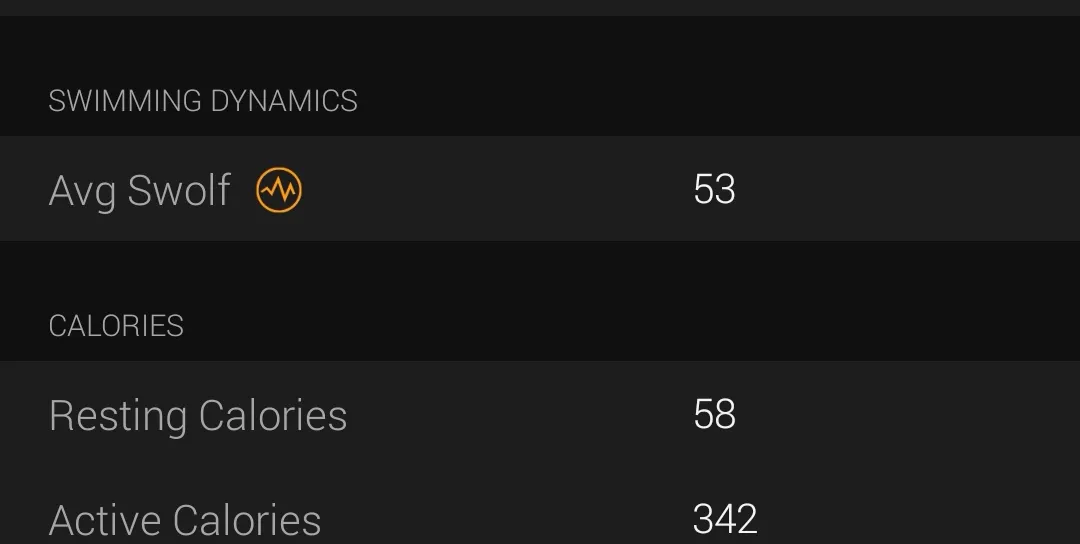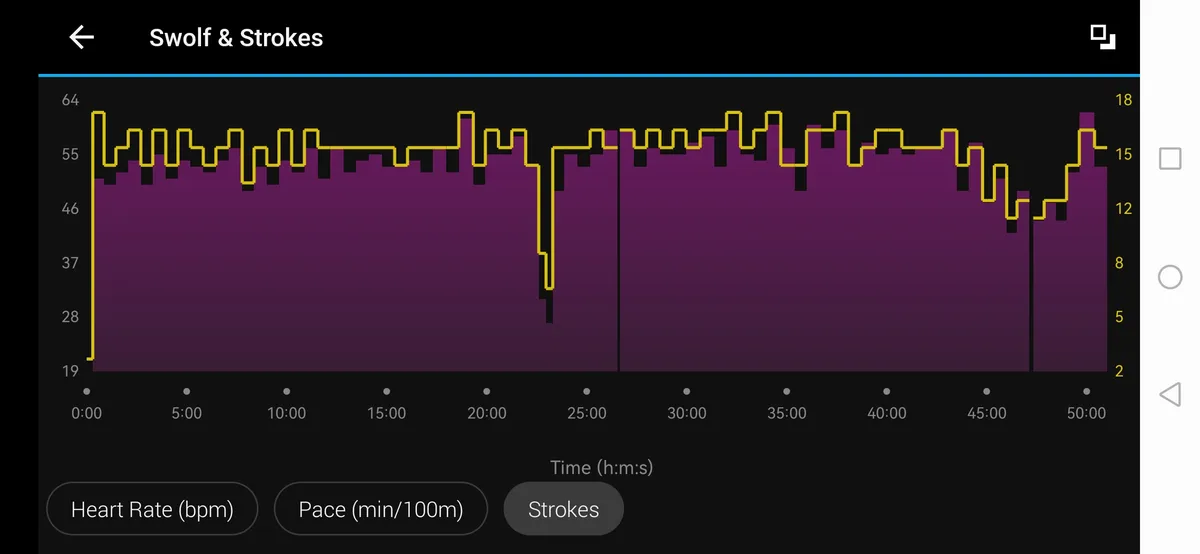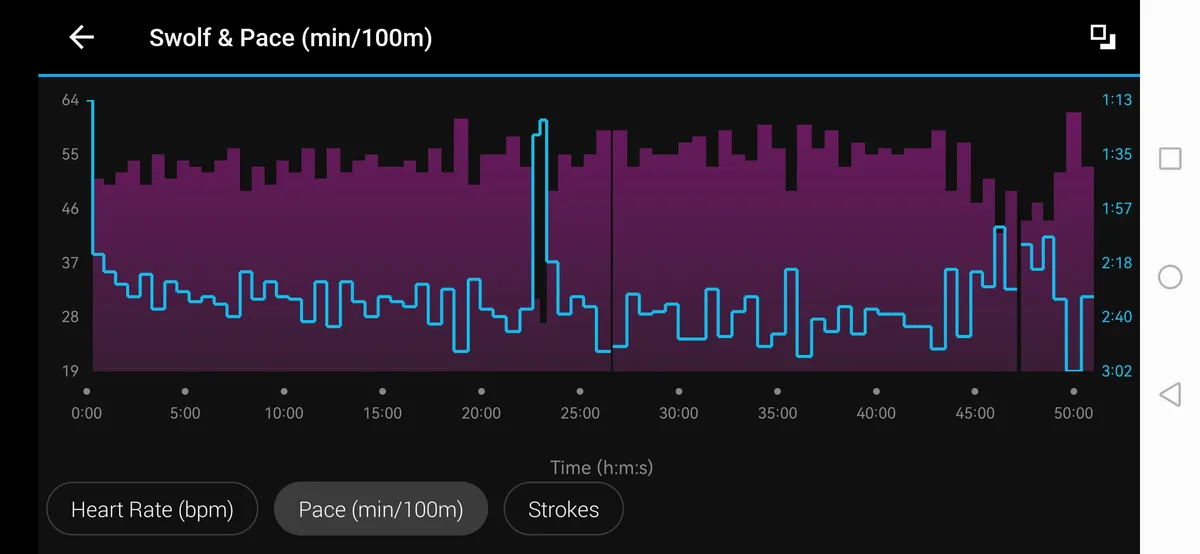Wondering what SWOLF is….? Yes, it’s a weird word, but no, it doesn’t mean howling at the moon as you swim (even though it sounds a bit like you should) and neither is it an anacronym, as many guess. In fact, SWOLF is simply a blending of two words: swimming and golf.
Much like your handicap in golf (if you’re a golfer) your SWOLF score is a measure of your efficiency in front crawl and can help you measure improvements in how you swim.

What is SWOLF in swimming?
Your SWOLF is pretty simple to calculate – you simply need to add together the number of strokes you take to swim a 25m length of the pool with the time in seconds it takes you. So if you take 20 strokes and take 30 seconds to swim a length, then your SWOLF score is 50. You can do this yourself using a basic stop watch or pool clock and counting your strokes, or for ease, ask a friend to do it for you poolside.
Many sports watches will do it for you though – in the example below, a Garmin Fenix was used to calculate SWOLF and averaged the score out across the swim based on stroke rate and 100m swim times.



You can see the swimmer here averaged 23 strokes/min and 2.32 minutes/100m during a swim of 2,000m. This gave a SWOLF score of 53 and is shown in the associated graphs.
What is a good SWOLF score?
Like so much data, your SWOLF score is pretty useless unless you understand it and can use it to improve your swimming. So what’s the idea? Well, all swimmers have a sweet spot which combines the least effort with the most speed for maximum efficiency and that’s the goal with SWOLF.
Using your base starting score, play around with tweaking your swimming and working on technique improvements. For example, can you slow down your stroke rate and work more on extending your reach, rotating your body and then pulling more strongly? How does that feel? Does it mean you can swim faster but with less strokes (and thereby less effort)? Does it make it easier to breathe and relax?
Conversely, swimmers with a very slow stroke rate may try increasing their stroke rate a little. What happens? Do you swim faster? But is it to the detriment of feeling comfortable and within your level of fitness? Does your form suffer?
Like with a handicap in golf, the aim is to bring your score down. The lower your SWOLF score the better and the faster you are swimming but with less effort.
Using a tempo trainer
It can be hard to judge your stroke rate as you swim, so a really good gadget to add to your kit bag is a Finis Tempo Trainer which is a little waterproof battery-operated gadget that you pop inside your swim cap and which gives an audible beep as you swim – a bit like a metronome (if you’re a musical type!). You set it to the number you want to try and then turn your arms over to the beat.

Start your tempo trainer at your usual stroke rate, then try moving it up or down a few beats until you find a tempo at which you feel good but which allows you to swim more quickly. Most people will find they quickly arrive at a rate that feels good and it’s surprising how much difference just a few strokes per length up or down can make.
Remember your individual goals
Finally, bear in mind that not everyone’s SWOLF score will be the same as we all have different physiology and we also have different swim goals. So for a fast and furious 400m triathlon swim where a triathlete is hoping to exit the water in the lead pack, the approach and therefore score may be very different to a swimmer looking to finish a 3.8km Ironman swim in a steady time and still feel fresh for the bike and run.
Play around with your SWOLF and use it as a tool to improve your swimming – but like with any data, see it as a part of the bigger picture and not something to obsess over!
